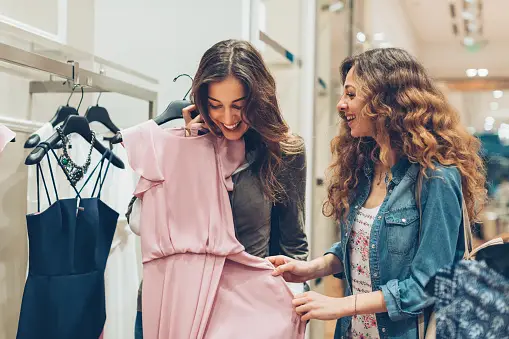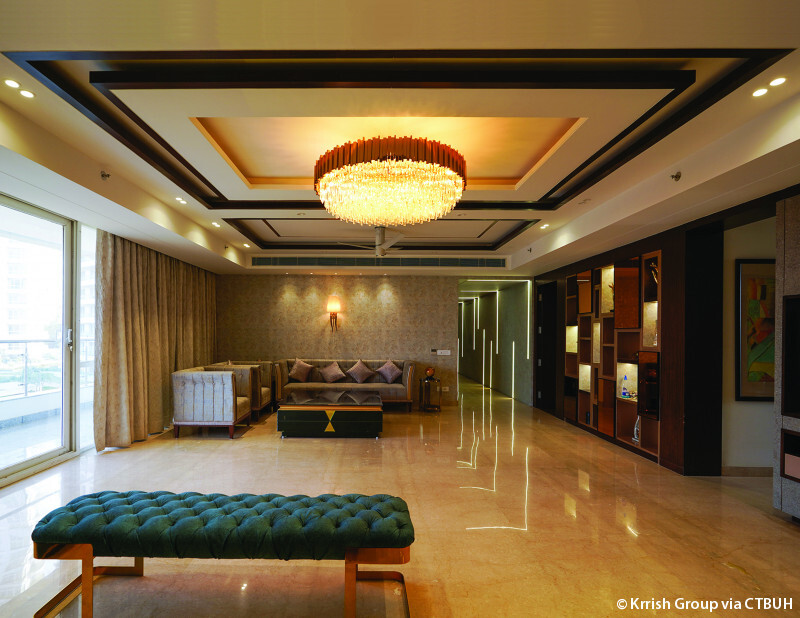Understanding Color Theory in Fashion - A Stylist's Guide
Discover the significance of color theory in fashion. Uncover the secrets of using color effectively in your style.

Color is one of the most powerful tools in fashion, capable of evoking emotions, setting moods, and making bold statements. As a stylist, mastering color theory is essential to create harmonious and visually pleasing outfits. In this comprehensive guide, we will delve into the principles of color theory and how they apply to fashion, helping you unlock your creative potential and elevate your styling skills.
The Basics of Color Theory
The Color Wheel
The color wheel is a fundamental tool in understanding?color relationships in fashion. It consists of three primary colors (red, blue, and yellow), three secondary colors (orange, green, and purple), and six tertiary colors (created by mixing a primary and a secondary color). The color wheel helps stylists identify complementary, analogous, and triadic color schemes.
Hue, Value, and Saturation
Hue:?Hue refers to the pure color itself, such as red, blue, or yellow. It's what we typically think of when we imagine a color.
Value:?Value refers to the lightness or darkness of a color. Colors can be lightened by adding white (tints) or darkened by adding black (shades). Value determines the contrast between colors in an outfit.
Saturation:?Saturation, also known as chroma or intensity, defines the vividness or dullness of a color. Highly saturated colors are vibrant and eye-catching, while desaturated colors are more muted and subdued.
Color Harmonies in Fashion
Understanding color harmonies is essential for creating visually pleasing outfits. Here are some key color harmonies to consider:
Monochromatic
Monochromatic outfits consist of different shades and tints of a single color. This creates a sophisticated and harmonious look. For example, a navy blue outfit with varying shades of blue can be visually appealing.
Complementary
Complementary colors are opposite each other on the color wheel, such as red and green or blue and orange. Pairing complementary colors creates strong contrast and can be striking when done right.
Analogous
Analogous colors are neighbors on the color wheel, such as blue, blue-green, and green. Using analogous colors in an outfit creates a harmonious and serene look.
Triadic
Triadic color schemes involve three evenly spaced colors on the color wheel. For example, red, blue, and yellow form a triadic color scheme. This combination creates a dynamic and balanced look.
Split Complementary
A split complementary color scheme involves a base color and the two colors adjacent to its complementary color. For instance, if your base color is red, the split complementary scheme might include blue-green and yellow-green. This scheme offers contrast while maintaining?harmony of fashion color.
Psychological Impact of Colors
Red
Red is associated with passion, energy, and attention-grabbing. It can be used to make a bold statement or add a pop of color to an outfit.
Blue
Blue signifies calm, trust, and reliability. It's a versatile color that can be used in both professional and casual settings.
Yellow
Yellow represents happiness, optimism, and creativity. It's an excellent choice for adding vibrancy to an outfit.
Green
Green symbolizes growth, harmony, and balance. It's often associated with nature and can evoke feelings of tranquility.
Purple
Purple conveys luxury, sophistication, and creativity. It's a regal color that can add a touch of elegance to fashion ensembles.
Orange
Orange radiates warmth, enthusiasm, and energy. It's a vibrant color that can be used to create a lively and cheerful look.
Black and White
Black represents sophistication and formality, while white symbolizes purity and simplicity. These neutral colors are wardrobe staples and can be combined with almost any other color.
Practical Tips for Stylists
Skin Tone Consideration
When styling clients, consider their skin tone to find the most flattering colors. Warm-toned individuals often look great in earthy tones and warm hues like red and orange, while cool-toned individuals may favor blues, purples, and cool greens.
Balance and Proportion
Achieve balance in outfits by considering color proportion. Use bold colors sparingly as accents, and balance them with neutral or complementary shades to create a visually pleasing ensemble.
Context Matters
The occasion and context influence color choices. Bright and vibrant colors may be suitable for casual outings, but subdued and neutral colors are often preferred for formal events or professional settings.
Experiment and Trust Your Eye
While color theory provides guidance, fashion is also about creativity and personal style. Don't be afraid to experiment with color combinations and trust your eye for what looks aesthetically pleasing.
Mastery of color theory is a valuable skill for any stylist. Understanding the principles of color, harmonies, and the psychological impact of colors empowers you to create captivating and harmonious outfits that align with your clients' preferences and the context of their wardrobe needs. By embracing color theory, you'll enhance your ability to make fashion statements that resonate with individuals and leave a lasting impression.
Utilizing Color in Specific Styling Scenarios
Day-to-Night Transition
Consider the transformation of outfits from day to night. Daytime outfits often benefit from lighter, softer colors that exude a sense of freshness. As evening approaches, introducing deeper or more saturated colors can add a touch of drama and sophistication. Accessories like statement jewelry or scarves can help in this transition.
Occasion-Specific Color Choices
Different occasions call for specific color choices. For example, weddings often have color themes that should be respected in guest attire. Formal events may require subdued and classic colors, while casual gatherings provide more room for vibrant and playful palettes.
Seasonal Adaptation
As seasons change, so do color preferences. Spring and?summer fashion?call for light and airy colors, while autumn and winter invite deeper and richer hues. Stylists must be attuned to the seasonal shifts in color trends to ensure clients' wardrobes remain fresh and relevant.
Embracing the Power of Accessories
Accessorizing with Color
Accessories play a crucial role in incorporating color into outfits. A carefully chosen handbag, pair of shoes, or statement necklace can introduce a pop of color to a monochromatic outfit or complement the dominant shades in a look.
The Versatility of Neutrals
Neutrals, such as black, white, gray, and beige, serve as versatile canvases for color experimentation. They allow for easy incorporation of colorful accessories or accent pieces, enabling stylists to create diverse looks within a client's wardrobe.
The Art of Color Mixing
Creating Balance
Balancing colors is an art form. Stylists must consider both the visual weight and emotional impact of colors when mixing them. Lighter colors can make the wearer appear more approachable, while darker colors convey authority and sophistication.
Texture and Fabric Choices
Texture and fabric choices can affect the perception of color. Velvet, for example, can enhance the richness of a deep red, while silk can amplify the luminosity of a pastel shade. Stylists should pay attention to how fabrics interact with colors to achieve desired effects.
Personalization and Individual Style
Personal Color Preferences
Understanding a client's personal color preferences is paramount. Some individuals gravitate toward certain colors due to their associations with positive memories or emotions. Incorporating these preferred colors can boost confidence and comfort.
Creating Unique Palettes
Stylists have the creative freedom to curate unique color palettes for clients that align with their personalities and lifestyles. By introducing unexpected color combinations or suggesting unconventional pairings, stylists can help clients stand out and express their individuality.
Staying Current with Color Trends
Continuous Learning
The fashion industry is dynamic, with?color fashion trends?evolving from season to season. Stylists must stay current with the latest color trends by attending fashion shows, studying designer collections, and keeping an eye on emerging color palettes.
As a stylist, mastering color theory is an ongoing journey that enhances your ability to transform clients' wardrobes and elevate their style. By considering the principles of color theory, individual preferences, and the context of styling scenarios, you can create outfits that resonate with your clients' personalities and make a lasting impression.
Ultimately, color is a powerful tool in the world of fashion, enabling you to craft unique and visually captivating looks. Embrace the art of color and use it to unlock your creativity, making every outfit a work of art that reflects your clients' individuality and style.
What's Your Reaction?















